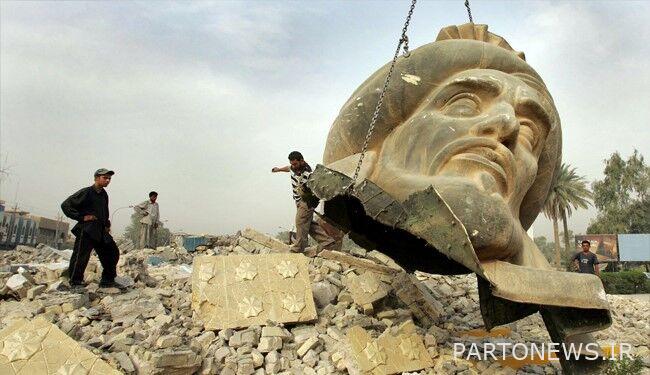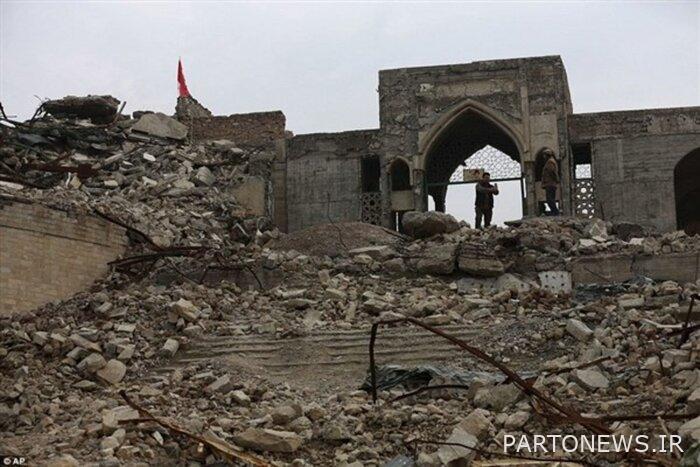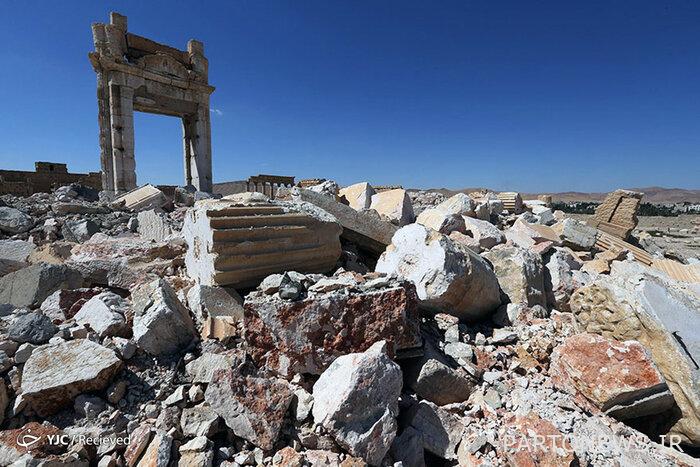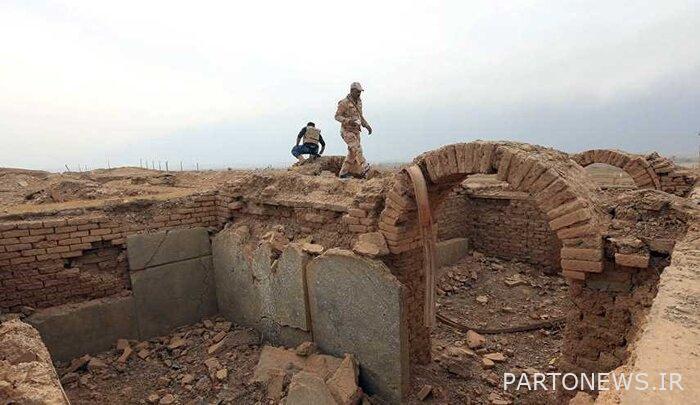Destruction of local antiquities; Misunderstanding of religion or anti-civilization project?

In connection with these destructions, which Haraz sometimes becomes the subject of media and social networks, various debates are formed, raising the question of whether the reason for the attack on the antiquities is related only to Takfiri beliefs, or some hands. Is it working? Where is this behind the scenes and what are its goals?
At first glance, these devastations and destructions, although for the people of the region, mean nothing more than the disappearance of identity and the remnants of ashes and the destruction of history and culture, but for the great museums of the West, collectors, brokers and Even some governments are very bread and water.
Ideological influences and beliefs cannot be denied, but to better understand the causes of all this destructive thirst, one must consider the role and role of other causes, including the role of businessmen and speculators and occupying governments and the chaos caused by the imposition of war on the region. And saw Western thought in relation to the confrontation of civilization.
Evidence and many analysts of regional issues say that takfiri thoughts are only related to a part of the body of takfiri groups that have been brainwashed, which happens to be the source and emergence of such thoughts and behaviors in Wahhabism that years ago With these thoughts, he caused the destruction of the tomb of the Infallibles in Baqiya Cemetery near the Prophet’s Mosque and the shrine of the Prophet (PBUH).
ISIL destroys Nineveh antiquities in Iraq
But at the same time, it is hard to believe that the leaders of these groups are involved in the theft of valuables and tools and the destruction of purely ideological works, and that the destruction is not rooted in other cases or even the activities of mafia gangs.
One of the reasons that can be cited in this context is that there is no emphasis or sign in the Book of God (Quran) to give permission for the destruction of antiquities and civilizations, and consequently, the leaders of the upper strata of these groups. They are certainly not unaware of this issue and they are not.
Another point is that if such a license existed even in the narrations and hadiths of the saints and elders of the beginning of Islam, many of these works, at least in the Islamic region, should have been destroyed in the very first decades of Islamic history.
Meanwhile, some believe that algebra is history and these vandalistic destructions cannot be stopped! It is said that this vandalistic spirit exists in all societies where the thirst for destruction is unquenchable. Accordingly, whenever the grounds and contexts of this destruction are prepared, it does not matter whether the excuse is religious or ethnic or social and political!
But what makes the role of organized robbery and targeted destruction more prominent during these years is the events that took place in Iraq and Syria and show that it is a combination of takfiri beliefs, destruction of civilization and greed for things. Price has played an important role in these destructions.
This question is more serious, considering the transfer of a large part of Iraq’s valuable artifacts from 2003, the time of the American occupation of Iraq, and Syria since 2011, when the country started the civil war, and the sale of parts of it in large auctions. Can’t the order of these destructions be issued from the decision rooms outside the region?
The Americans and the Historic Places of Babylon
The remnants of the ancient city of Babylon in Iraq, located about 80 km south of Baghdad, are 4,000 years old and are among the historic cities whose hanging gardens in the form of historical stories, legends and myths still retain their charm and in their hearts. It has so many treasures of gold and valuable artifacts that smugglers attract antiques; So attractive that after the occupation of Iraq in 2003 and the overthrow of Saddam, the Americans set up one of their largest bases near the site of the historic city of Babylon, in other words, the American military camped in the ruins of historic Babylon and under the pretext of fortification, They covered the soil with all that was in their hearts.
Although the site has been looted since the ouster of ousted dictator Saddam Hussein in Baghdad, many Iraqis believe it was badly damaged in the 21 months the area was under US general control, and some of its treasures looted. And stole.

Destruction of the tomb of Younis Nabi in Mosul
There is still a moat built by the American military around that ancient site. You can still see the trenches built to fight on the outskirts, but the point is that there was never a major war in that area, and no Iraqi citizen knew for 21 months what the Americans were doing inside the compound.
It is said that the US military took away some of its bricks and bricks as a souvenir, in addition to possible covert actions in this historic area, which had then become a no-go area, and it turned out that some of the famous gate murals were later found. Ashtar (Ishtar) has also disappeared and the other part of it has been damaged.
Rejection of stolen objects in European museums
One year after the American occupation of Iraq in 2003, reports of the destruction of the ancient city of Babylon leaked to the media, which seemed to have tried more than anything in those years to destroy the American military. Acquit the parties and at the same time lose the rejection of the great theft operation in the history of Iraq.
In this regard, the British Museum published a report in the Guardian newspaper in 1983, in which it confirmed the damage caused by American soldiers to the inscriptions and other works of the city of Babylon, claiming that the destruction was due to the fact that American soldiers used it for They used to fill sandbags to build trenches; In other words, the British Museum wants to say that the Americans did not realize that they were destroying the history of Iraq and the region. It is also alleged that US troops destroyed a 2,600-year-old brick walkway with their military personnel carriers.
According to a report by the British Museum, which was prepared 21 months after the establishment of the military base in the ancient site of Babylon, it reported fragmented and scattered bricks in the site of the ancient city, on which the name “Nimrod” was recorded.
It was also said that “the dragon designed on the brick gate of this city has been destroyed and there is evidence that someone tried to remove its valuable bricks”.
But the unanswered point is that the Americans were basically never attacked in Babylon, except for sporadic clashes, and incidentally this part of southern Baghdad was usually a safe area for American troops. In addition, the location of the site of the ancient city of Babylon is naturally miles away from the heights, and the Americans could have built their base farther away from the historic site.
Destroying the tomb of Younis Nabi in Mosul
In 2017, Euronews published a report in which it referred to a major historical robbery in Mosul: “They did not neglect under the tomb.”
ISIS first blew up the tomb of Younis Nabi on the east coast of Mosul, but it was interesting that they did not touch Isharhadun Palace below this tomb. The tomb of the prophet Jonah hid an ancient structure beneath its foundations and walls; the palace of Asrhaddon, king of Assyria, a palace unknown to archaeologists but whose excavation was stopped many years ago for fear that the tomb of the prophet Jonah would be shaken. “
The European network explained at the time that “ISIS destroyed many tombs, monuments and monuments, but they not only had an exception for Isrhadun’s buried palace, but also calculatedly and with the aim of discovering and selling antiquities in the palace buried in the heart.” “They dug and searched the soil.”

Palmyra monuments in Syria destroyed by ISIS
Esarhaddon, king of the Assyrian Empire in the seventh century BC and father of Ashurbanipal, was the last powerful king of Assyria. In July 2014, ISIS completely blew up and destroyed the tomb of Younis Nabi in the Iraqi city of Mosul.
In June and July, more than two and a half months after the ISIS attack and the fall of Mosul, the Americans refused the Iraqi government’s request for help and took no action against ISIL, just in the days when ISIL was looting and destroying Younis’ tomb. Nabi and emptying the treasures under the tomb.
Destruction of works in the Museum of Nineveh
On February 26, 2015, ISIS showed the destruction of historical statues at the Nineveh Museum in Mosul in the form of a video that showed images of Takfiris using axes, hammers, and knocking down statues to kill artifacts in The museum had fallen. The Mosul Museum was one of the most important museums in the world, where thousands of valuable works were kept, and some of these works belonged to the eighth century BC.
Of course, not even after the liberation of Mosul, no one said anything about the fate of the thousands of valuable historical artifacts and antiques in the Mosul Museum.
Destroying the ancient city of Nimrod
An area on the Tigris coast, about 30 km southeast of Mosul, was another place that the Takfiris destroyed this time under the pretext of Nimrod. The historic city of Nimrud was attacked by ISIS on March 6, 2015, and the Takfiris used bulldozers and heavy machinery to destroy the Assyrian civilization in northern Iraq, which dates back to the 13th century BC. UNESCO also called the move a war crime, and archaeologists described it as a catastrophe.
Destroying the ancient city of Hetra or Al-Hadr
On March 7, 2015, ISIS attacked the ancient Parthian city of Hetra (Al-Hadr), 150 km southwest of Mosul, and destroyed much of it. The city, which witnessed important events in the middle of the two world empires, was destroyed amid the sighs and groans of archaeologists, although here too there is no official source or expert on the fate of the artifacts on this historic site. He did not say or report.
Destruction of Palmyra antiquities in Syria
In Syria, too, the depth of destruction and destruction of antiquities and civilizations by ISIS is great, but there are no complete and comprehensive reports yet. Archaeologists and historians of the world watched the devastation with worried eyes. Abu Laith had announced the intention of the takfiri group for the Syrian city of Palmyra before launching the demolition operation on a radio network called Alwan FM.
ISIL, which was at war with history, civilization, culture and thought, began its work in Palmyra in late August 2015, first destroying the historic Baal Temple. In the first week of October of the same year, he destroyed the famous Nusrat Arch of the city, and in July, he smashed 6 ancient statues, including “Shir Allat”.
Where have the works gone?
In the eyes of international organizations and the international community, these events took place only with the condemnation, concern and sighs and groans of archaeologists, and in the news of these barbaric acts, even a question was asked about the fate of thousands of stolen valuables and objects. Failed.
Some believe that the demolition and destruction of historical monuments was a cover for the looting of antiquities by ISIL and their sale in world markets, as Iraqi officials said after the recapture of Mosul, in ancient tunnels dug in parts of Mosul Found; Objects looted by ISIL forces from museums and transported outside the area.

The historic city of Nimrod
Undoubtedly, if the Iraqi and Syrian authorities make a list of their missing historical objects, one can find traces of at least some of them, which may have been sold at auction, among the works of collectors and museums, and find out who is responsible for the civilizational heritage of the nations of the region. They have entered into a deal with one of the most criminal terrorist groups.
In all likelihood, it cannot be ruled out that the leaders of ISIL and some of their sponsors, from the United States to Saudi Arabia and the United Arab Emirates, have been in a bowl in connection with the looted wealth from historical sites.
During the war against ISIS and even in recent years, there have been documented reports that the Americans have continuously used helicopters to move ISIS commanders and forces into northern Iraq.
Now, years later, one of the biggest brokers of al-Qaeda and ISIS, who was involved in smuggling valuable Iraqi historical artifacts abroad, has been arrested; Sami Jassim al-Jubouri, Abu Bakr al-Baghdadi’s deputy and in charge of the financial and economic affairs of the ISIS terrorist group, was held by US forces in Boka prison in Basra for many years and was captured by Iraqi security forces last week.
According to al-Jubouri himself, in addition to selling oil and minerals, he played a key role in stealing, transporting and selling historical artifacts from museums and archeological sites in Iraq and Syria and destroying artifacts in the two countries by 2018. .
But Iraqi officials have not yet asked al-Jubouri “where did he take the looted artifacts and from whom did he order the destruction?”
Perhaps Al-Jubouri, as the black box of looting the works of the region, can clarify whether all the savagery against the works of civilization in the Middle East is rooted in takfiri thought or all of this happened at the hands of the global mafia, or both in the form of They wrote an unwritten agreement; events during which they both targeted and destroyed the identity and culture of the nations of the region, as well as looted all the historical wealth.
And where was the plan and order at the end?
.

